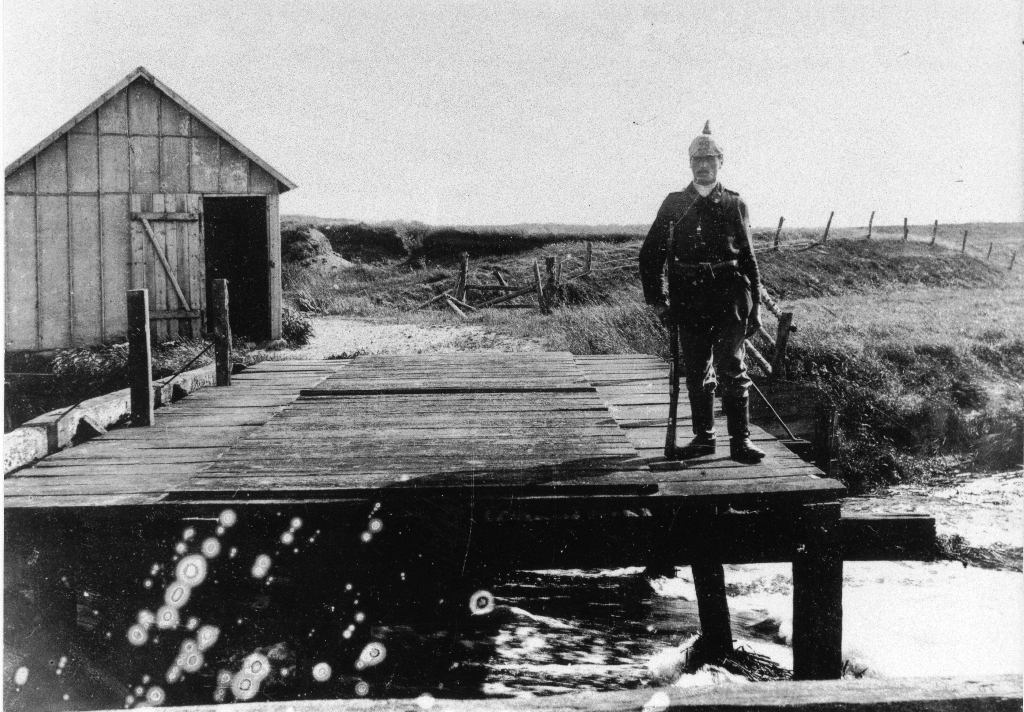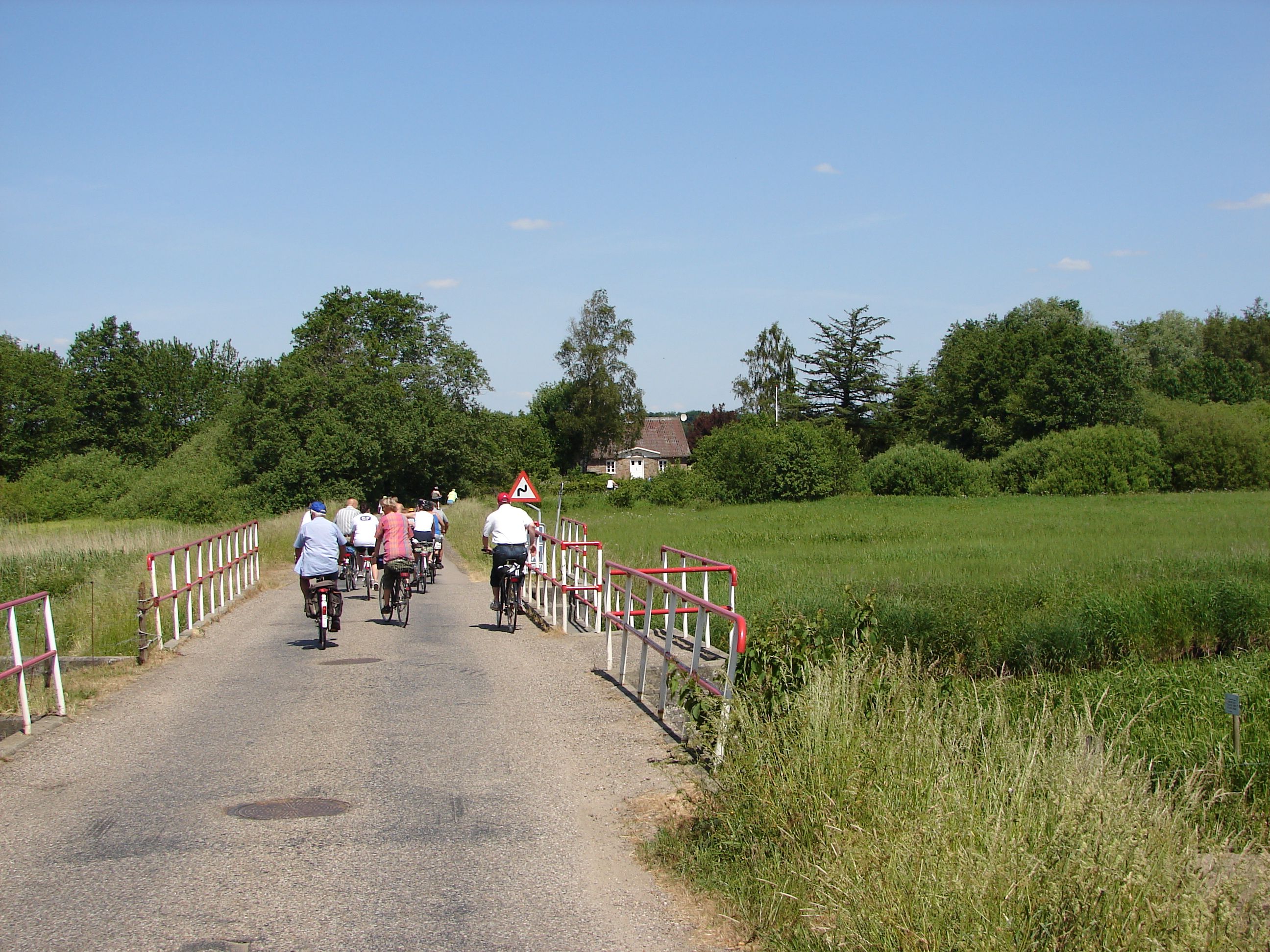Frihedsbroen (Freedom Bridge)
Frihedsbroen (Freedom Bridge) has a small but important role in the national struggle in the period from 1865 to 1920. It was here that the South Jutlanders crossed the river Kongeå when they had to meet in Skibelund Krat.
The bridge was originally a slight wooden bridge, only suitable for pedestrians. In 1922 it was replaced by the solid stone bridge that still exists today.
Connecting link to Skibelund Krat
The farm Beistrupgård in Københoved owned land on both sides of the river Kongeå. The land was originally connected by a ford. Sometime later, the owner of Beistrupgård constructed a narrow wooden bridge on the site. In connection with the bridge, the owner had an eel trap made in the river.
After 1865, Frihedsbroen became important. It was here that the South Jutlanders crossed the river Kongeå when they had to meet in Skibelund Krat. The bridge was narrow and difficult to pass with a vehicle. The poor daily traffic was the reason why the Prussian authorities in the period 1864-1930 did not establish a reporting post here, but only manned the bridge on special occasions.
The German border gendarmes lived in a simple wooden shed. On big meeting days in Skibelund Krat, they carefully noted the names of all the South Jutlanders who crossed the bridge to go to the meeting in Skibelund Krat.

Frihedsbroen with German border gendarme, 1914. To prevent anyone from crossing the bridge illegally, a number of bridge planks were removed.
Photo: Vejen Lokalhistoriske Arkiv.
The bridge is demolished
During WW1, the German authorities demolished half of the wooden bridge to ensure that no-one fleeing from the German military service could illegally cross the river Kongeå here.
The narrow bridge could not handle heavy traffic, which is the reason why in 1922 a decision was made to replace the flimsy wooden bridge with the solid stone bridge that still exists today. The bridge was built on private initiative and is partly privately funded.
The owner of Beistrupgård, Hans Diderik Kloppenborg-Skrumsager gave DKK 10,000, Skibelundforeningen (Skibelund Association) contributed DKK 3,000, Askov Højskole (Askov High School) gave DKK 1, 000 and the regions of Haderslev and Ribe each contributed about DKK 2,000.
Frihedsvej to Frihedsbroen
The bridge was ready for use in 1924. In 1926 Malt Paris laid down Frihedsvej, which led from Skibelund Krat to Frihedsbroen. Skibelundforening made a contribution of DKK 3,000 towards the construction of the the road. Now it was really easy for the South Jutlanders to get to meetings in Skibelund Krat.
Author: Linda Klitmøller, museum curator, Sønderskov Museum


